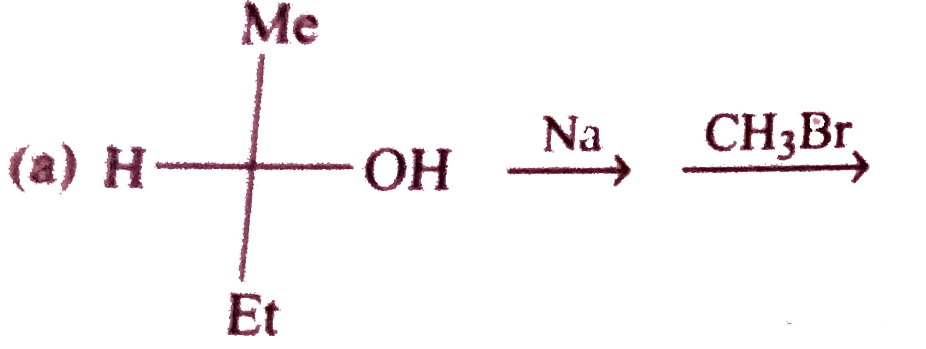Which of the following reactions proceed at low pressure?
N2(g)+3H2(g)⇔2NH3(g)
H2(g)+I2(g)⇔2HI(g)
PCl5(g)⇔PCl3(g)+Clg
N2(g)+O2(g)⇔2NO(g)
The correct Answer is:C
To determine which of the following reactions proceed at low pressure, we need to analyze the change in the number of moles of gas on both the reactant and product sides of each reaction. The principle is that at low pressure, a reaction will favor the side with more moles of gas.
1. Understand the Concept of Pressure and Moles:
- At low pressure, the reaction will shift towards the side with a greater number of moles of gas. This is based on Le Chatelier's principle, which states that a system at equilibrium will shift in response to changes in pressure.
2. Identify the Reactions:
- We need to analyze each reaction provided in the options to determine the number of moles of reactants and products.
3. Calculate Change in Moles (Δn):
- Δn = (Number of moles of products) - (Number of moles of reactants)
- If Δn > 0, the reaction will proceed in the forward direction at low pressure.
- If Δn < 0, the reaction will favor the reverse direction.
- If Δn = 0, the reaction is at equilibrium and does not favor either direction.
4. Analyze Each Option:
- Option 1:
- Reaction: A → B + C
- Moles: Reactants = 1, Products = 2 (Δn = 2 - 1 = 1)
- Since Δn > 0, this reaction proceeds forward at low pressure.
- Option 2:
- Reaction: A + B ⇌ C + D
- Moles: Reactants = 2, Products = 2 (Δn = 2 - 2 = 0)
- Since Δn = 0, this reaction is at equilibrium and does not favor either direction.
- Option 3:
- Reaction: PCl5 ⇌ PCl3 + Cl2
- Moles: Reactants = 1, Products = 2 (Δn = 2 - 1 = 1)
- Since Δn > 0, this reaction proceeds forward at low pressure.
- Option 4:
- Reaction: N2 + O2 ⇌ 2NO
- Moles: Reactants = 2, Products = 2 (Δn = 2 - 2 = 0)
- Since Δn = 0, this reaction is at equilibrium and does not favor either direction.
5. Conclusion:
- The reactions that proceed at low pressure are those where Δn > 0. From our analysis, Option 1 and Option 3 are the reactions that proceed at low pressure.
Final Answer:
- The reactions that proceed at low pressure are Option 1 and Option 3.
- At low pressure, the reaction will shift towards the side with a greater number of moles of gas. This is based on Le Chatelier's principle, which states that a system at equilibrium will shift in response to changes in pressure.
- We need to analyze each reaction provided in the options to determine the number of moles of reactants and products.
- Δn = (Number of moles of products) - (Number of moles of reactants)
- If Δn > 0, the reaction will proceed in the forward direction at low pressure.
- If Δn < 0, the reaction will favor the reverse direction.
- If Δn = 0, the reaction is at equilibrium and does not favor either direction.
- Option 1:
- Reaction: A → B + C
- Moles: Reactants = 1, Products = 2 (Δn = 2 - 1 = 1)
- Since Δn > 0, this reaction proceeds forward at low pressure.
- Option 2:
- Reaction: A + B ⇌ C + D
- Moles: Reactants = 2, Products = 2 (Δn = 2 - 2 = 0)
- Since Δn = 0, this reaction is at equilibrium and does not favor either direction.
- Reaction: PCl5 ⇌ PCl3 + Cl2
- Moles: Reactants = 1, Products = 2 (Δn = 2 - 1 = 1)
- Since Δn > 0, this reaction proceeds forward at low pressure.
- Reaction: N2 + O2 ⇌ 2NO
- Moles: Reactants = 2, Products = 2 (Δn = 2 - 2 = 0)
- Since Δn = 0, this reaction is at equilibrium and does not favor either direction.
- The reactions that proceed at low pressure are those where Δn > 0. From our analysis, Option 1 and Option 3 are the reactions that proceed at low pressure.
- The reactions that proceed at low pressure are Option 1 and Option 3.
Similar Questions
Knowledge Check
Which of the following reactions proceeds with retention of configuration?
A B
B C
C D
D
Which of the two reactions proceed faster ?
 A(i)B(ii)C(i)=(ii)DNot definite
A(i)B(ii)C(i)=(ii)DNot definiteWhich one of the following reactions proceeds through free radical chain mechanism?
AHydrolysis of tert-butyl chloride with aqueous KOHBPhotochemical chlorination of methaneCAddition of HBr to etheneDAddition of NaHSO3 on acetone
Which among the following reactions will be favoured at low pressure?
View SolutionWhich of the following reactions proceeds through an alkylsodium intermediate ?
View SolutionIn which of the follolwing, the reaction proceeds towards completion
View SolutionWhich of the following reactions does not proceed in forward direction?
View SolutionWhich of the following reactions does not proceed in forward direction?
View Solution
